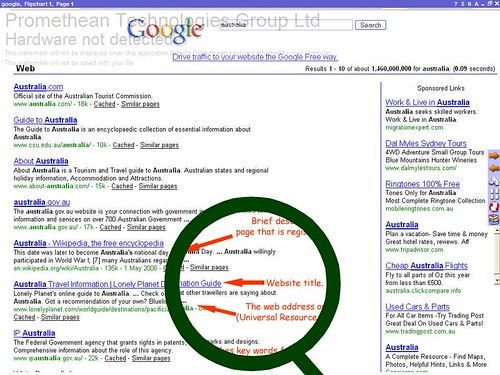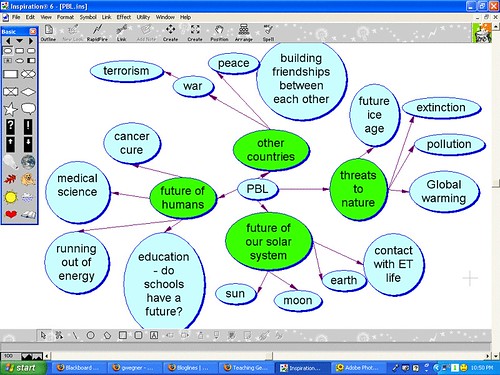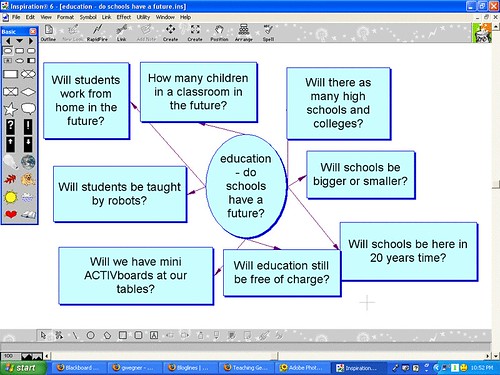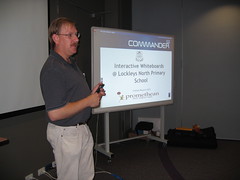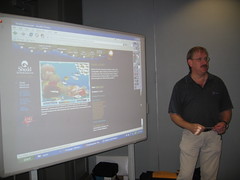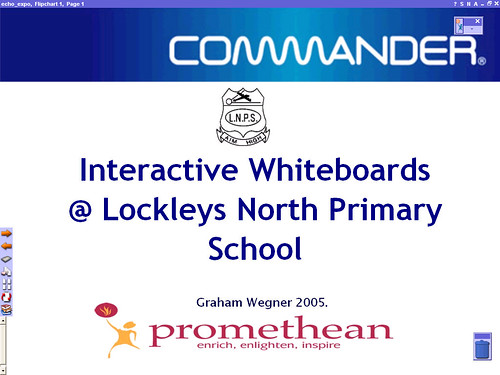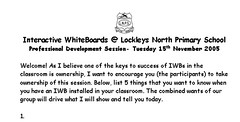I flagged over at our team blog, Activboarding, that our group of IWB teachers would be meeting to review our progress at implementing our ActivBoards and it would be Time For The Hard Questions. So to put myself under the same microscope as my colleagues, I am posting my responses to these questions:
1. Why do you feel that IWB's are an important step towards our school's vision of "up-to-date-technology"?
Certainly, I believe that Junior Primary classes have really found the IWB to be easy to integrate - as part of activity time, using the interactive activities online keyed into their curriculum, explicit teaching of specific skills. Certainly, the opportunity exists to use IWB's to model information literacy skills that would support our Problem Based Learning program. In an ideal world unrestrained by budgets, there would be adequate access to computers/laptops after this explicit teaching. Currently, it is an ideal way to prepare a class before going off to the Computing Room to work on a specific project. IWB's are important because it brings the reluctant or less confident teacher along quicker towards realising the value and potential of ICTs, and translates into better learning opportunities for their students. An IWB also is a great just-in-time learning tool for whole class exploration - access to online content that everyone can view clearly is only a click or two away. Access to maps, interactive diagrams, photos where a teacher can add extra learning via annotation is something that cannot be done well without this tool and certainly difficult to implement in a Computing Room unless you have a software tool like LANschool.
2. What's the best lesson or activity that you've managed using your IWB?
Unfortunately, it hasn't been a full on, whizbang multimedia experience that has been my best, because my ideas for potential use of a IWB are yet to be realised. My best has been in a Maths lesson, an area of the curriculum I am less confident and consequently, deliver more traditionally than what I'd like. I recall a lesson on long multiplication where using students, we modelled the correct method, the preferred way of setting out and then checked the result modelling the correct use of the virtual calculator. Several boys who had been reluctant learners really switched on during this lesson and worked hard to show neat and correct working out in their books - just for the opportunity to scribe on the IWB and use the virtual tools. And the work was saved on file for a couple of absent students.
3. What have been the most significant hurdles towards getting the IWB integrated in your teaching & learning program?
Time has been a big factor in my progress. Being part time in the classroom and sharing a laptop gives me less time to "play around" with the software and consequently less opportunity to design more in-depth lessons. More and more, I find myself wanting to give the class opportunities to develop ideas along the lines of student initiated curriculum and use new tools that aren't necessarily best viewed in a whole class scenario. It is sometimes hard to know whether to start a flipchart from scratch, look in the library or go online to find the resources I need for the next lesson or unit of work.
4. Where do you see the IWB making the most significant, transformative differences in your future practice?
I think they would have the biggest impact if the class had significantly more access to computers than currently possible so that my teaching could be applied to tasks more readily. With so many Web 2.0 tools around and more to come, it would be a great place to review and plan ahead for my class in its web presence, either through their own website, tracking information sources of importance and participating in online communities.
5. How ready are you for a mentoring role with the next wave of IWB users?
I'm ready - I have to be as it's part of my job. I've tried to keep marginally ahead of our pioneers but because they were given their opportunity with the IWBs because of their ability to work most things out by themselves , I've only really been called upon for technical issues. I've tried to foster reflection and sharing via the Activboarding blog which although under utilised by this group, still has potential. So, in understanding how the whole thing works technically and in operating the tools, I’m a good source of support but I have a long way to go to be where I’d want to be as an innovative user of this technology.
So I've answered these probing questions. Do any other IWB bloggers want to help me out and let me know what their responses to these questions would be? Jo? Graham @ EFL? John? Jeff? Anyone?
